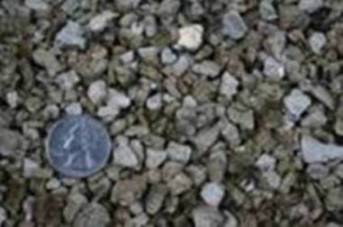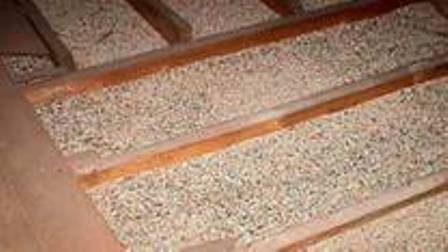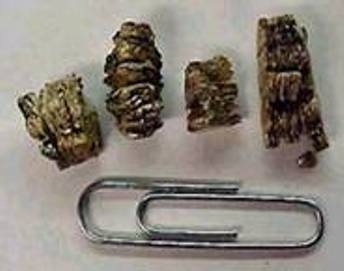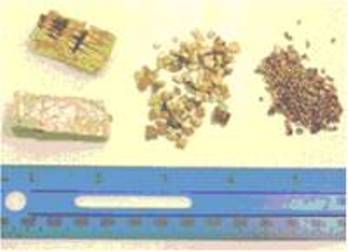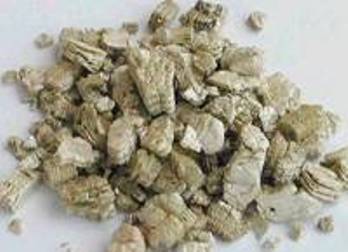Protect Your Family from Asbestos-Contaminated Vermiculite Insulation
This page provides important information on how to protect yourself and your family if you suspect that you might have vermiculite insulation from Libby, Montana.
- What is Vermiculite
- Concerns About Asbestos-contaminated Vermiculite Insulation
- Identifying Insulation That is Made From Vermiculite
- Risk of Exposure to Asbestos If You Have Vermiculite Insulation
- Concerns About Exposure If Your Family Removed or Handled Insulation That Contained Asbestos
- If You Have Vermiculite Insulation
What is Vermiculite
Vermiculite is a naturally-occurring mineral composed of shiny flakes, resembling mica. When heated to a high temperature, flakes of vermiculite expand as much as 8-30 times their original size. The expanded vermiculite is a light-weight, fire-resistant, and odorless material and has been used in numerous products, including insulation for attics and walls. Sizes of vermiculite products range from very fine particles to large (coarse) pieces nearly an inch long.
Concerns about Asbestos-contaminated Vermiculite Insulation
A mine near Libby, Montana, was the source of over 70 percent of all vermiculite sold in the United States from 1919 to 1990. There was also a deposit of asbestos at that mine, so the vermiculite from Libby was contaminated with asbestos. Vermiculite from Libby was used in the majority of vermiculite insulation in the United States and was often sold under the brand name Zonolite. If you have vermiculite insulation in your home, you should assume this material may be contaminated with asbestos and be aware of steps you can take to protect yourself and your family from exposure to asbestos.
Identifying Insulation That is Made From Vermiculite
Look at the photos on this website and then look at the insulation without disturbing it. Vermiculite insulation is a pebble-like, pour-in product and is usually gray-brown or silver-gold in color.
The following photographs show typical vermiculite insulation.
You should assume that vermiculite insulation is from Libby and treat the material as if it contained asbestos by not disturbing it or by using a trained professional if it needs to be removed. Since the Libby mine was estimated to be the source of over 70 percent of all vermiculite sold in the United States from 1919 to 1990 and vermiculite from Libby was contaminated with asbestos, further testing is not necessary to take the appropriate precautions. While you can hire a trained professional to test your attic for asbestos, this may be expensive and, depending on the methods used, might give you erroneous results. We do not recommend that you open your walls to check for vermiculite.
Risk of Exposure to Asbestos If You Have Vermiculite Insulation
Asbestos causes cancer and other diseases. There is no known safe level of asbestos exposure. Asbestos fibers must be airborne to cause a health risk through inhalation, so the first step is not to disturb the material, which would release more fibers into the air. If you remove or disturb the insulation, it is probable that you may inhale some asbestos fibers - the degree of health risk depends on how much and how often this occurred. If you do not go into your attic, handle, or disturb the insulation, it is likely that you will not be exposed to asbestos fibers from vermiculite insulation.
Also, you need to consider if any disturbance of the insulation - possibly by a contractor doing work in your attic - may result in the fibers being deposited into other areas of your house where an exposure might be possible.
Concerns About Exposure If Your Family Removed or Handled Insulation That Contained Asbestos
It is not possible to say whether your exposure may result in disease. Exposure to asbestos increases your risk of developing lung diseases including asbestosis, lung cancer, or mesothelioma, and disease may not occur until decades after exposure. The risk of disease increases as the level, duration, and frequency of exposure increases. That risk is made worse by smoking.
If you are concerned about possible exposure, talk to your doctor and consider consulting a physician who specializes in lung diseases, also known as a pulmonologist. For more information on asbestos-related diseases see the Agency for Toxic Substances & Disease Registry Web site.
If You Have Vermiculite Insulation
YOU SHOULD ASSUME THE VERMICULITE CONTAINS ASBESTOS AND DO NOT DISTURB IT! Any disturbance could potentially release asbestos fibers into the air. If you absolutely have to go in your attic and it contains vermiculite insulation, you should limit the number of trips you make and shorten the length of those trips in order to help limit your potential exposure.
We recommend that you:
- Leave vermiculite insulation undisturbed in your attic or in your walls.
- Do not store boxes or other items in your attic if it contains vermiculite insulation.
- Do not allow children to play in an attic with vermiculite insulation.
- Do not attempt to remove the insulation yourself.
- Hire a professional asbestos contractor if you plan to remodel or conduct renovations that would disturb the vermiculite in your attic or walls to make sure the material is safely handled and/or removed.

